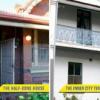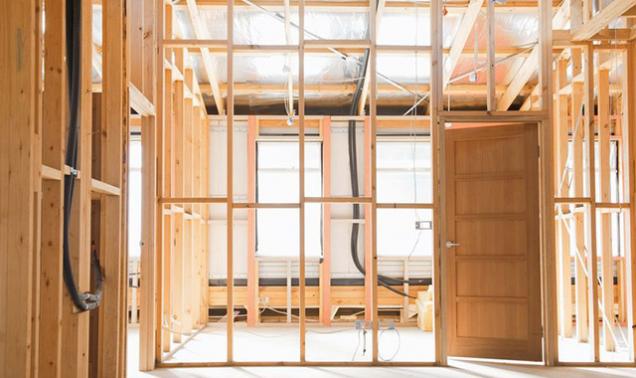
'The Renovators' Where did they go wrong?
Did you happen to watch the finale of Channel 10’s recent hit ‘The Renovators’ If so, you’d have witnessed the anxiety and disappointment faced by many of the competitors as the houses they spent so many weeks renovating finally went under the hammer at auction.
With all the recent hype around becoming a renovator inspired by the great TV shows like ‘The Block’ and ‘The Renovators,’ this leaves too many questions for the viewers. Unfortunately, the program doesn’t show or explain anywhere near the real amount of detail associated in pulling off a project like those shown. It simply isn’t as easy as finding a run-down property, doing it up and selling for a profit.
According to the numbers presented for each property on the show, half of the six renovated houses sold at a profit, while the other half were losses. It’s questionable whether any out of the six properties would have actually made a profit in reality!
There are, of course, the obvious statements which are thrown around like ‘it’s a tough market to sell,’ etc., but these are just words to cover up other problems.
The truth about these shows is that the money is made by advertising, sponsorship and donated products which the show receives along the way. The production station draws high ratings because the viewers are genuinely interested in creating value, although the station makes a killing while only showing a quarter of what really goes on. We are all tricked into believing there are huge profits to be made from completing a similar project.
So are you curious as to where they went wrong?
The impression I get from a TV show like ‘The Block’ or ‘The Renovators,’ is they promote it’s easy to walk away with a profit.
But in actual fact, it’s not that simple at all. Actually, knowing whether a renovation deal is going to work is largely determined before the property is even purchased.
The due diligence period of any type of deal is the cornerstone of your project and knowing what the end sale price is going to be is absolutely vital. It is from conducting market research that we become confident in the end sale price and work backwards into the start of our deal. This ultimately indicates exactly how much we can purchase the property for.
We do acknowledge the contestants of ‘The Renovators’ had no control over which properties had been purchased and what prices had been paid, they were only following the TV shows scripts and guidelines.
We also understand the show was wrong in the way the profit margin was calculated. According to the show, each project that managed to sell for more than the purchase cost plus the renovation budget (which was set at 20% of the purchase cost) would be deemed to have made a profit.
But what about all the additional costs that come as part of completing such a deal? Holding costs (interest repayments), stamp duty, planning costs, fees and contributions etc.?
Given this methodology the show announced the results as follows;
House #1 (The Weatherboard)
- Bought for $478,213; Sold for $575,000; Reno budget $95,642; 'Profit': $1,145
House #2 (The Converted Shop)
- Bought for $594,730; Sold for $700,000; Reno budget $118,946; 'Loss': $13,676
House #3 (The Terrace)
- Bought for $749,390; Sold for $925,000; Reno budget $149,878; 'Profit': $25,732
House #4 (The Half-Done House)
- Bought for $668,403; Sold for $770,000; Reno budget $133,680; 'Loss': $32,083
House #5 (The 60's Suburban)
- Bought for $631,828; Sold for $730,000; Reno budget $126,366; 'Loss': $28,194
House #6 (Fibro Cottage)
- Bought for $309,990; Sold for $440,000; Reno budget $61,998; 'Profit': $68,012
As you can imagine, by including all the added costs listed above would shoot the three profit figures into the negative and turn the losses into even bigger losses.
So why even add value if there isn’t any profits to gain?
Well, to be completely honest, I have some doubt the production coordinators are even that educated to squeeze a financial gain from any of the projects shown, let alone do it without the support of a nation and 20,000 people walking through the door for an open inspection.
From what I can see, the products and materials that are constantly being used to refurbish an old and run down home are far too expensive. It just isn't viable. The only scenario that would make this acceptable is by fitting out your own home.
So what can we take from the series?
1. Luckily, renovating and adding value to a property isn’t hard to get done BUT there does need to be a higher process of due dilligence built in to the deal. It isn't difficult to find comparable sales for the end product you intend to sell and you should already have a fair idea of what the market is willing to pay for a run down property in the area. (or at least what you can afford to pay). It's as simple as going to the auctions or finding out what they sold for.
2. Unluckily for you, there isn't a teams of thousands prepared to do all the mundane jobs behind the scenes which are generally the ones that take the most effort, thinking and persistence. If you learn to do it right, then the one after that becomes much easier and faster, and the one after that becomes easier and faster even more so, and so on as you get better at it.
Conclusion: Don’t be fooled by what’s shown on television. Be intuitive, seek learning and education, do your homework and have a go!
You can also follow us on facebook to stay in tune with all the latest www.facebook.com/NewYoungPropertyDevelopers

